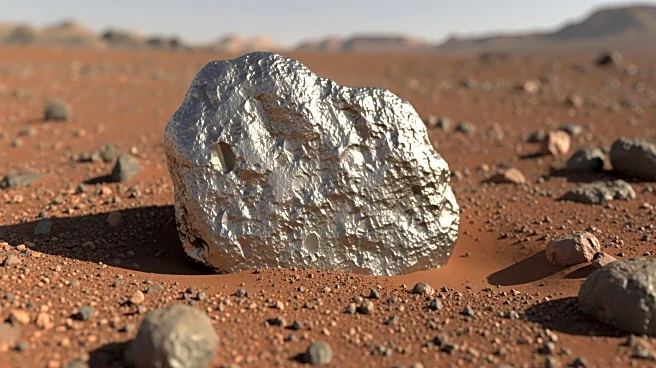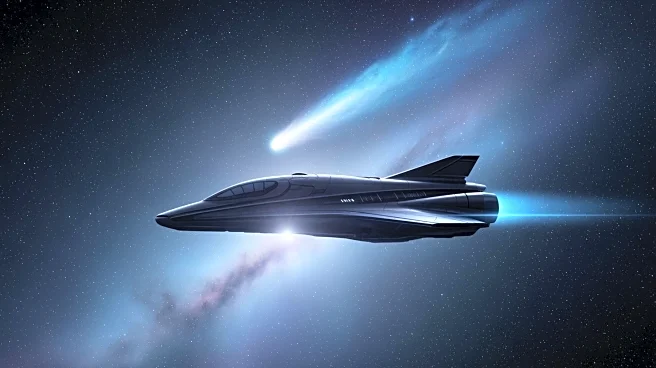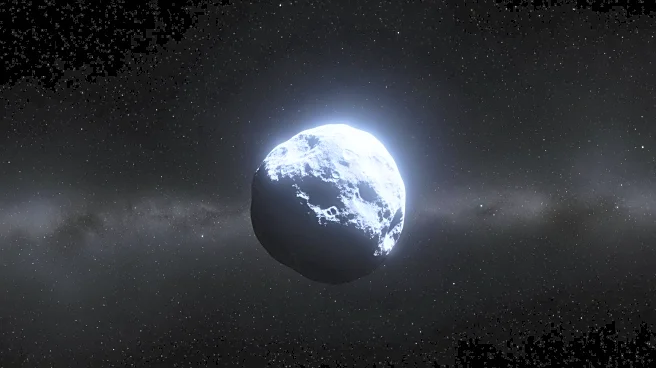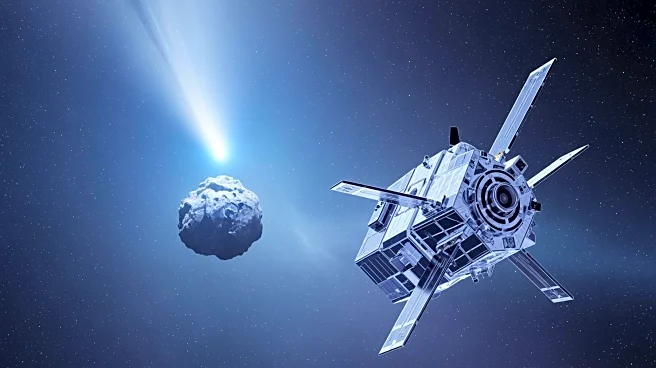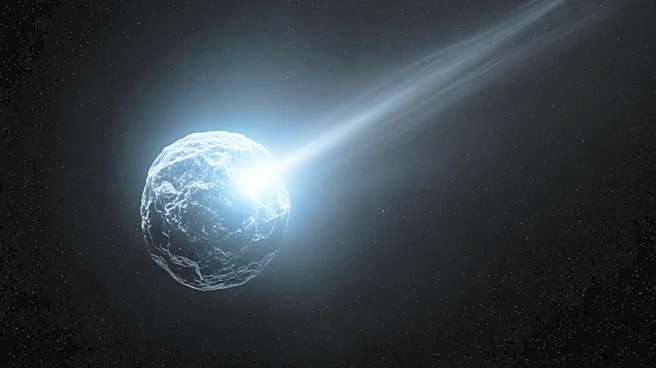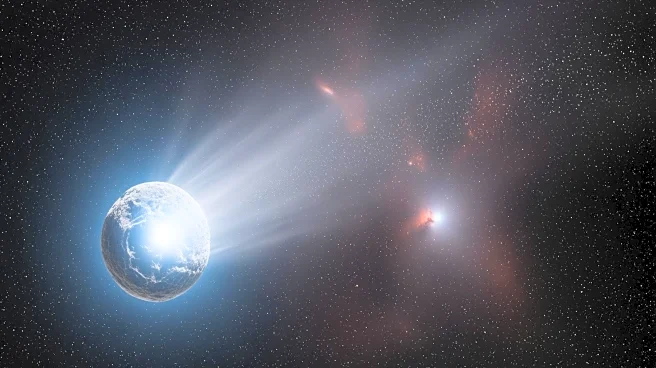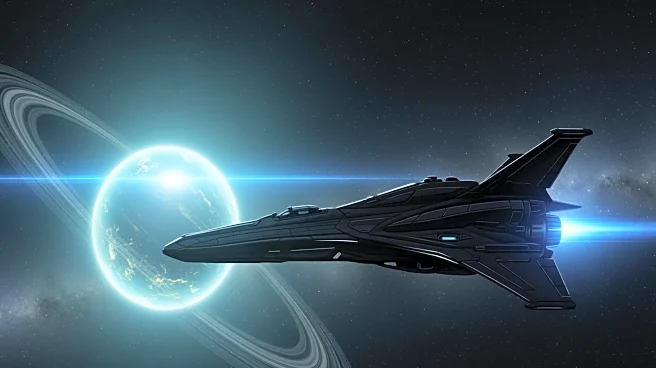What's Happening?
NASA has released new images of the interstellar comet 3I/ATLAS, captured from Mars orbit and the Perseverance rover. These images reveal details about the comet's coma and hydrogen cloud, aiding in the refinement
of its size and composition. The comet has sparked debate due to its unusual jet structure and brightness, leading to speculation about its nature. Some scientists suggest it could be a natural comet, while others entertain the possibility of it being an alien spacecraft. Despite these theories, NASA maintains that 3I/ATLAS is a natural interstellar comet, posing no threat to Earth.
Why It's Important?
The release of these images is significant as it provides valuable data for understanding interstellar objects. The comet's unusual characteristics challenge existing models of comet physics, prompting scientists to explore new theories. The debate surrounding 3I/ATLAS highlights the ongoing interest in technosignatures and the search for extraterrestrial life. This event underscores the importance of continued observation and study of celestial objects to expand our knowledge of the universe.
What's Next?
NASA plans to continue monitoring 3I/ATLAS as it approaches Earth on December 19, 2025, although it will remain at a safe distance. Further analysis of the comet's jets and composition is expected, with additional imagery from Mars orbiters and deep-space probes. The comet's trajectory towards Jupiter in March 2026 will be closely watched, as it may provide more insights into its nature. Scientists will continue to explore natural explanations for the comet's anomalies.
Beyond the Headlines
The discussion around 3I/ATLAS reflects broader scientific efforts to understand interstellar objects and their potential implications for space exploration. The comet's behavior may lead to advancements in comet physics and contribute to the search for extraterrestrial life. The event also highlights the role of public interest and media in shaping scientific discourse.



